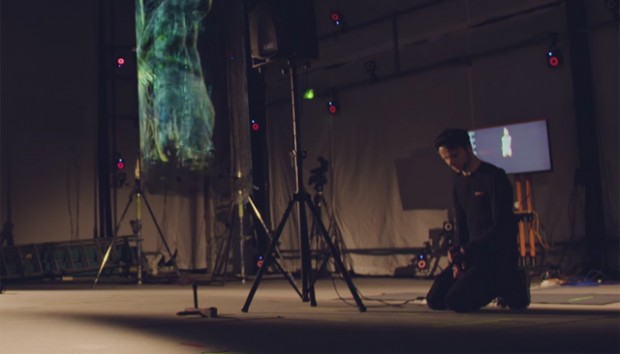For the first time in its four-century history, William Shakespeare’s stormy fantasy The Tempest will be presented with all the wonder and magic that the playwright could only have dreamt of, thanks to a collaboration between the Royal Shakespeare Company and Intel, in association with The Imaginarium Studios, the production company founded in 2011 by filmmakers Andy Serkis and Jonathan Cavendish.
The new performance will provide a major update on the tale’s 1611 debut by utilizing a completely digital character — the first in an RSC production — thanks to Xsens’ real-time, MVN motion-capture technology.
One of the Bard of Avon’s last plays, The Tempest tells the story of Prospero, an exiled magician who decides to settle old scores when his rivals sail past his solitary island. With the help of his magical servant Ariel, Prospero forces the ship to his shores, ready to right old wrongs through magic and cunning. One of the unique parts of Ariel is that the character features more stage directions than almost any other in Shakespeare’s bibliography, making it one of the most complicated to stage.
“For this performance to work, Ariel needed to fly, walk in space and collaborate with other performers in the moment,” said Ben Lumsden of The Imaginarium Studios. “Without unrestrictive performance capture technology like MVN, Ariel would have been just another landlocked cast member in a costume.”
In the midst of the performance, Ariel morphs from an ethereal spirit, to a water nymph, to a harpy. RSC and Imaginarium achieved these transformations by capturing actor Mark Quartley through Xsens mo-cap sensors placed inside his costume. When Ariel transforms into something more than human, the actor’s movements are projected onstage and in the air as a digital avatar. The flexibility of Xsens tech enables Quartley to interact with his castmates in human form, and shapeshift live on stage.
We are such stuff as dreams are made on…
The Xsens MVN system is used to track the actor’s performance, then the data is run through Autodesk’s MotionBuilder and from there into Epic’s Unreal Engine 4. The video output is then sent to d3 servers powered by Intel’s Xeon processor connected to the RSC lighting desk, which in turn controls 27 projectors located around the stage.
“Inertial motion capture is changing how far productions can push their craft, bringing high-end digital characters into live shows,” said Hein Beute product manager at Xsens. “With The Tempest, the RSC is creating a real-time application that is both immediate and novel, something audiences always want to see on their nights out.”
RSC’s latest production of The Tempest is running at the Royal Shakespeare Theatre in Stratford-Upon-Avon until January 21, 2017. Tickets are available at www.rsc.org.uk.





 Win a Funko X Lilo & Stitch Prize Pack!
Win a Funko X Lilo & Stitch Prize Pack! 
